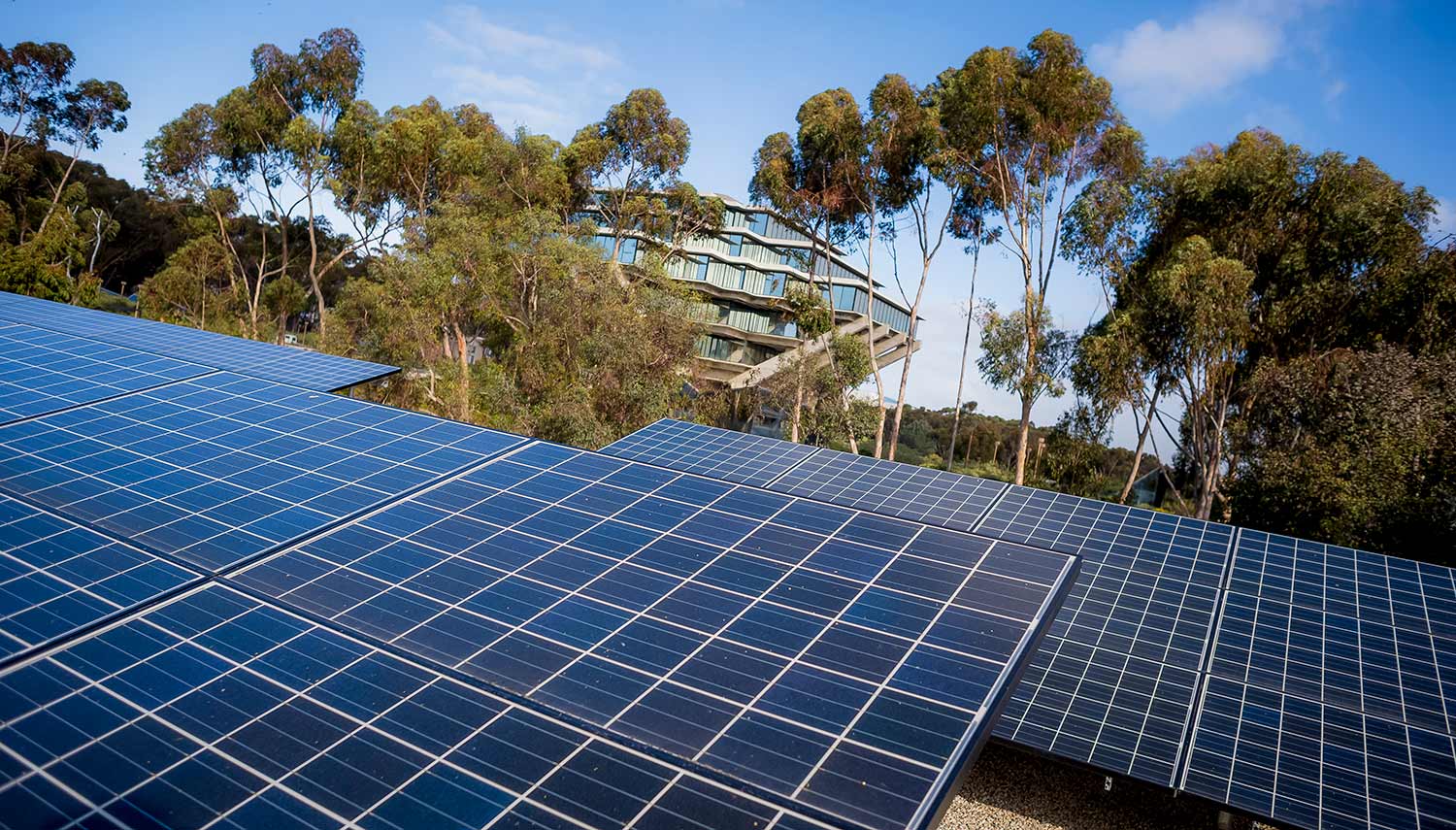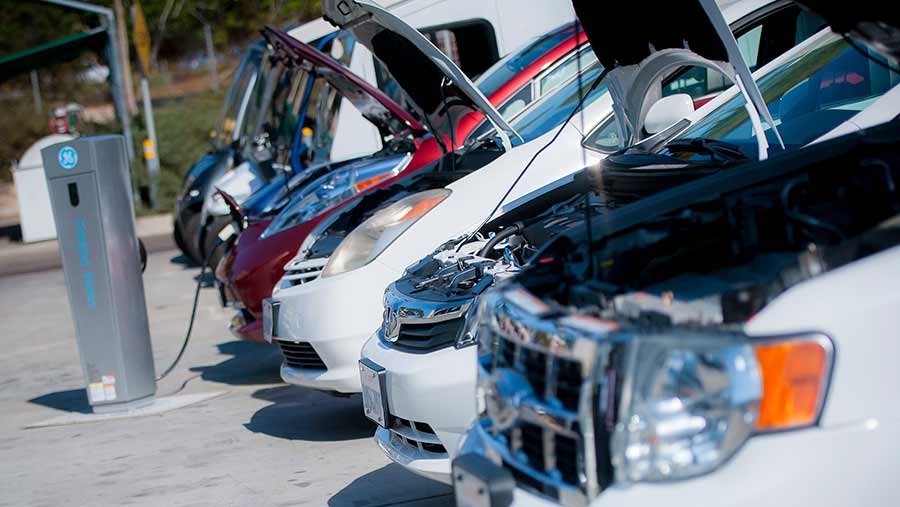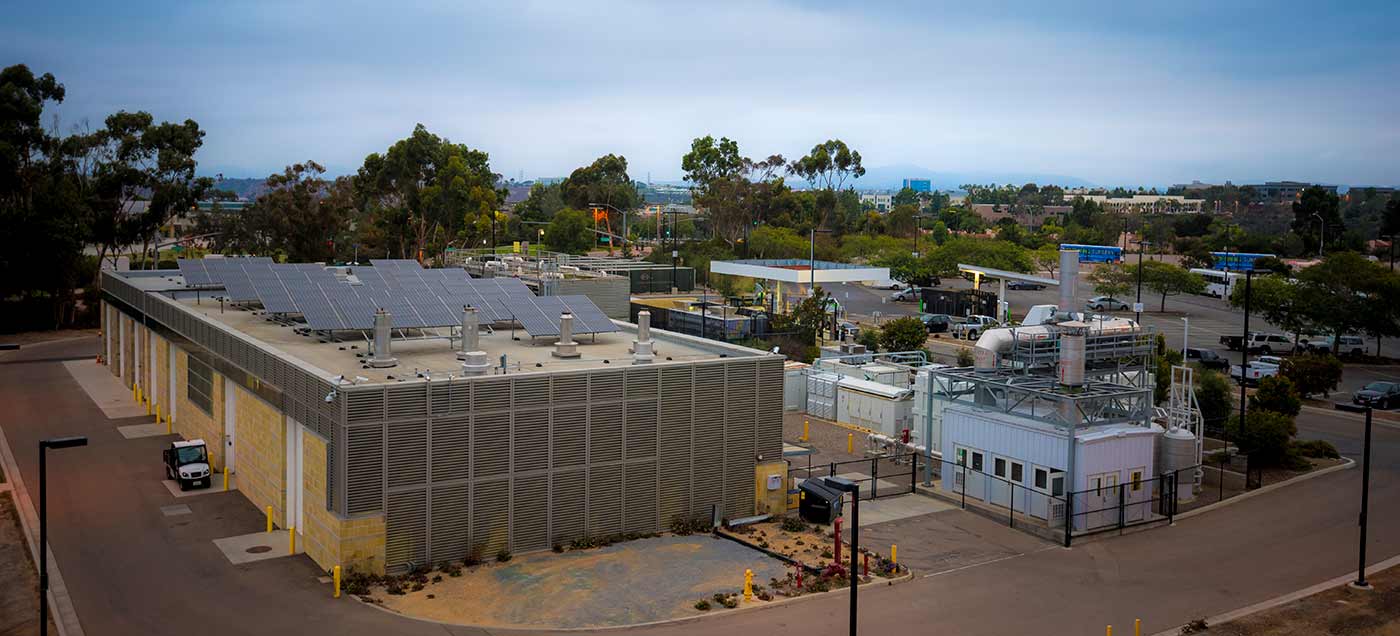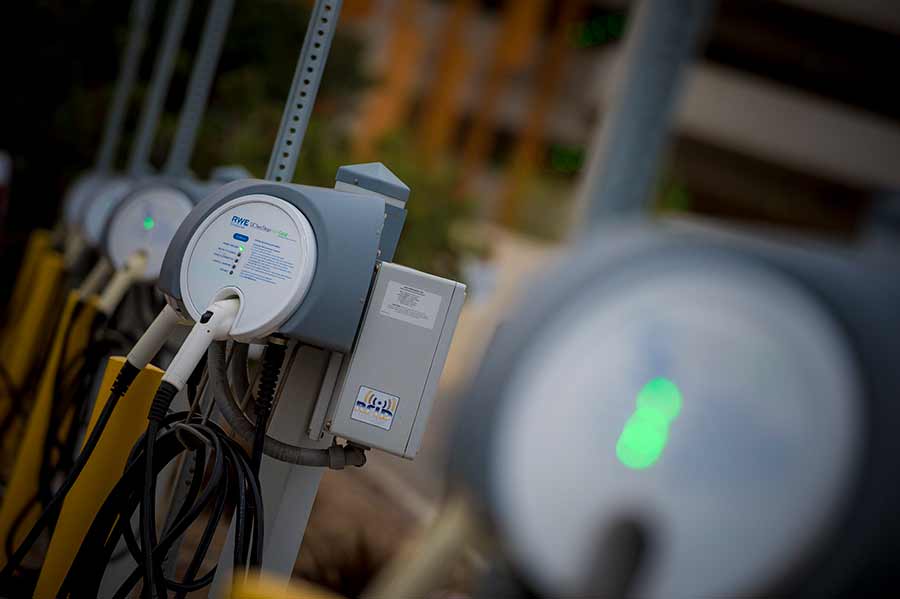
By:
- Laura Margoni
Published Date
By:
- Laura Margoni
Share This:

Solar panels can be found atop many buildings and parking structures throughout the UC San Diego campus. Photos by Erik Jepsen/UC San Diego Publications
UC San Diego’s Path to Carbon Neutrality
Known for being one of the greenest universities in the nation, UC San Diego has been committed to sustainability since its founding more than half a century ago. Yet, when the University of California pledged to become carbon neutral by 2025, everyone agreed that achieving this ambitious goal would not be easy.
“Efforts to reduce our carbon footprint have been underway for years,” said Gary C. Matthews, Vice Chancellor for Resource Management and Planning. “But it will take more hard work as well as individual and collective action for us to reach our goal.”
The campus has long made a concerted effort towards reducing carbon emissions throughout operations. UC San Diego’s microgrid, considered one of the most advanced in the world, is key to creating a carbon neutral campus. The microgrid generates more than 85 percent of the electricity used on campus annually and uses power from several sources including:

More than 60 percent of the campus fleet comprises hybrid, electric or alternative fuel vehicles.
- 2.8 megawatt fuel cell that runs on biogas
- 2.3 megawatts of solar panels/photovoltaics
- 30 megawatt natural-gas-fired combined heat and power system that provides 85 percent of the campus’s annual electricity needs and is one of the most efficient cogeneration plants in the country.
The campus also serves as a living laboratory, integrating innovative technology into campus operations while helping to advance research. UC San Diego has been testing a diverse portfolio of energy storage systems on the microgrid including battery/chemical storage, an ultra-capacitor-based system and thermal energy storage.
“Energy storage helps integrate intermittent renewable resources, such as solar power, into the grid and provides power when it’s needed,” said Matthews. “The technology has the potential to transform the global energy landscape and we’re proud to be a part of that effort.”
UC San Diego has also made strides in the clean transportation sector. The campus fleet is considered one of the greenest in the nation with more than 60 percent of the fleet comprising hybrid, electric or alternative fuel vehicles. Just recently, the campus also began participating in a “green” oil demonstration project, replacing the motor oil in several fleet vehicles with a bio-based motor oil made from plants.
“Our hope is to have the entire fleet running on this new motor oil in the future, if feasible,” said Jim Ruby, assistant director of UC San Diego Fleet/Transportation Services.

The UC San Diego microgrid, one of the most advanced in the world, is powered by a mix of on-site sources including a biogas-powered fuel cell and solar panels.
The campus is also home to one of the largest, most diverse range of electric vehicle charging stations at any university in the world and participates in research to improve electric vehicle charging technology. Through partnerships with car manufacturers including Daimler and BMW, the campus promotes the usage of electric vehicles to the campus community through affordable leasing options as well.
UC San Diego has also strived to reduce commuter impacts through promotion of public transit and improving bicycle access by increasing bike lanes on campus. Already, 57 percent of UC San Diego commuters use transportation other than single-occupant vehicles, reducing annual transportation-related CO2 emissions by approximately 55,000 metric tons. When light rail comes to campus in 2021, it is expected to have an additional positive impact on the campus’s carbon emissions.
The university has also committed to building green with all new construction and major renovations required to meet a minimum standard of Silver in Leadership in Energy and Environmental Design (LEED) – a third-party certification program developed by the U.S. Green Building Council. Today, there are nearly two dozen LEED-certified buildings on campus, including two platinum-rated buildings.
UC San Diego has also completed more than $100 million in energy retrofits and completed a Carbon Reduction Plan. The plan provides options for reducing carbon emissions using a balanced approach of carbon offsets, core energy reduction measures and future cogeneration plant replacement.

The campus is home to one of the largest, most diverse range of electric vehicle charging stations at any university in the world.
“We’ve leveraged a variety of partnerships, incentives and programs to get us where we are today,” said Matthews. “While we have accomplished much, there is still much to do to offset future growth and meet our goals.”
Part of the ongoing effort to meet those goals will involve encouraging faculty, staff and students to take action as individuals.
“There are many simple things you can do reduce your carbon footprint,” said Sara McKinstry, UC San Diego Sustainability Manager. “Turn off the lights when you leave a room, take public transportation, compost food waste, save water, consider giving up meat one day a week, replace incandescent bulbs with LEDs—those are just the tip of the iceberg.”
McKinstry encourages everyone to visit the Reduce Your Impact page on the UC San Diego Sustainability site to learn more about your personal impact on the planet and what you can do reduce your carbon footprint.
“One person’s actions can make a difference, especially when combined with the actions of others,” she said. “Each of us has a part to play in our ability to reach carbon neutrality.”
Share This:
You May Also Like
Stay in the Know
Keep up with all the latest from UC San Diego. Subscribe to the newsletter today.


